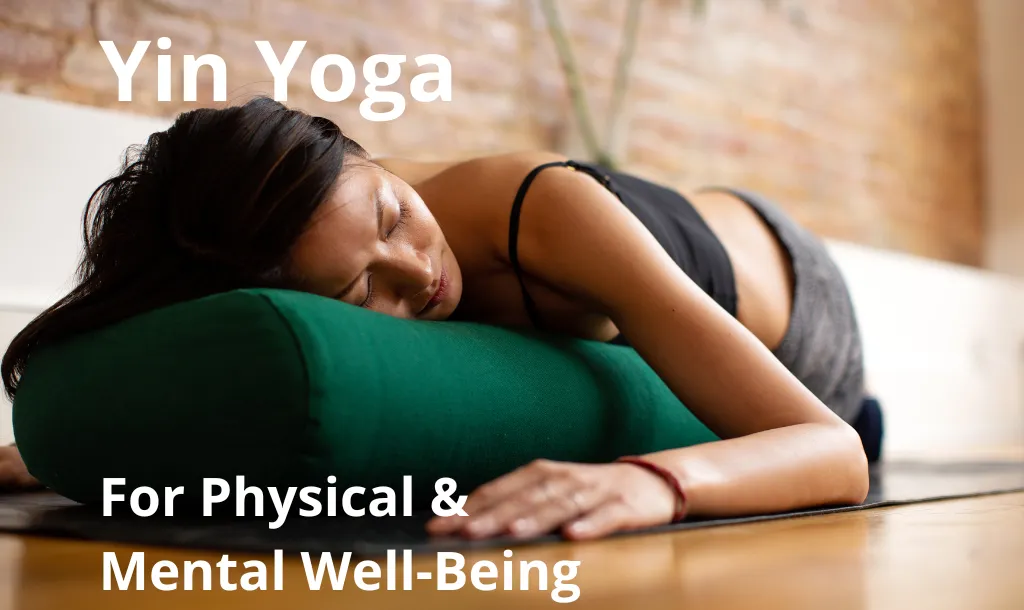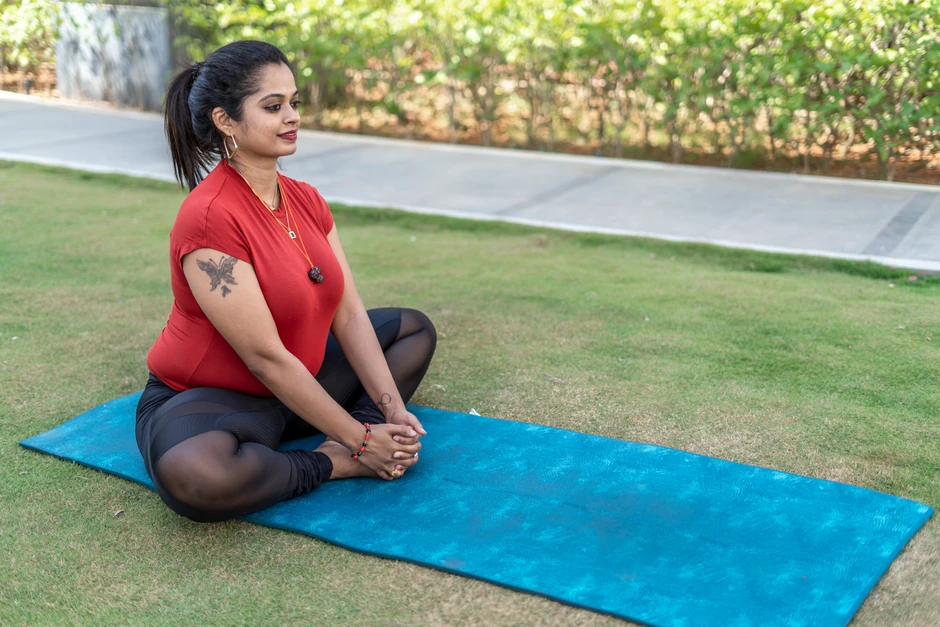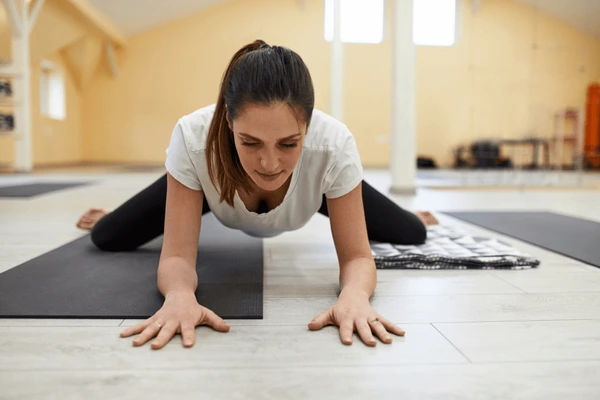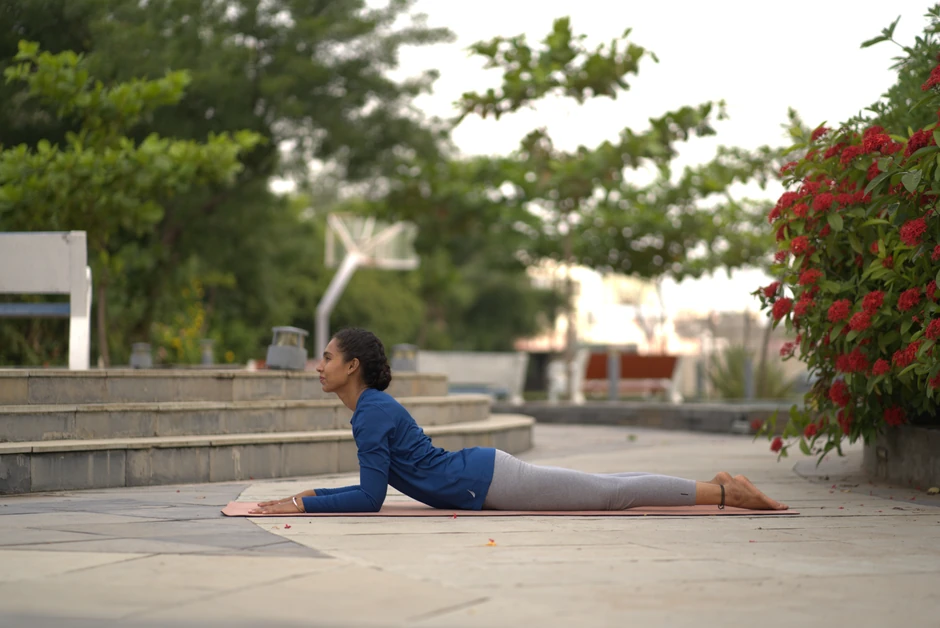

Yin Yoga is a slow, meditative yoga practice that targets the deep connective tissues, such as ligaments, tendons, fascia, and joints. These tissues are vital in supporting muscles, joints, and organs, and when tight or restricted, they can lead to pain, reduced mobility, and impaired function.
That’s where yin yoga comes in! Through long-held, passive poses—typically lasting 3 to 10 minutes with the additional support of props—Yin Yoga allows you the time to gently stretch and release these deep tissues, improving flexibility, mobility, and overall well-being.
Originating from Taoist principles and traditional Hatha Yoga practices, Yin Yoga was formally developed in the 1980s by Paul Grilley. It primarily focuses on areas rich in connective tissues, such as the hips, pelvis, and lower spine, along with conscious and controlled breathwork. By combining slow movement with mindful breathwork, yin yoga enhances physical health and promotes mental clarity and emotional balance.
Some benefits of doing yin yoga, both for the mind and the body, include:
Yin Yoga targets deep connective tissues like fascia, tendons, and ligaments. By holding poses for extended periods, it gently stretches these tissues, improving their elasticity and increasing flexibility over time. This enhanced flexibility and better range of motion reduces stiffness and supports daily activities.
Long-held poses combined with focused breathing help boost blood and oxygen flow to muscles and tissues. This increased circulation aids in flushing out toxins, and promotes cell regeneration. This combination supports healing and recovery and leaves the body feeling more balanced and energized.
Yin yoga activates the parasympathetic nervous system—the body’s “rest and digest” mode—through its slow, meditative practice. Studies show that long-held poses and mindful breathing help calm the mind, reduce cortisol levels, and release stored tension in the body. This deeply relaxing experience not only eases stress and anxiety but also improves emotional resilience, helping you feel grounded and refreshed.
The essence of yin yoga lies in being still, receptive, and learning to let go. It helps you slow down and create space for deep relaxation. The three core principles that guide the practice include:
Here’s a simple and effective yin yoga sequence to help you get started:

The Butterfly Pose helps to stretch the inner thighs, groin, and lower back while targeting the deep connective tissue around the hips, improving flexibility and mobility. Holding this pose for an extended period promotes relaxation and encourages a deep sense of calm.
Bananasana stretches the side body, obliques, and lower back. It helps release tension in the hips and spine while improving flexibility in the torso and increasing circulation to the upper body. This pose also promotes deep breathing and mindfulness.

Frog Pose deeply stretches the hips, groin, and inner thighs. It also targets the lower back and helps release tension in the pelvis. This pose can be especially beneficial for improving hip flexibility and mobility while stimulating the flow of energy through the body.

Sphinx Pose targets the lower back, hips, and spine. It helps improve spinal flexibility and strengthens the lower back muscles. This gentle backbend opens the chest and stimulates circulation, promoting a sense of relaxation and energy flow.
Dragon Pose targets the hips, groin, and thighs while deeply stretching the quadriceps and hip flexors. It’s a great pose for improving flexibility and releasing tension in the lower body, particularly beneficial for those who experience tightness or discomfort in the hips.
While these poses can be beneficial on their own, you can maximize the benefits of yin yoga under the guidance of an expert coach.
1-on-1 coaching allows for a more personalized experience that addresses your unique requirements—whether it’s working on flexibility, reducing stress, or easing chronic pains. With live and real-time sessions, your coach can adjust the flow and duration of poses based on your body’s response. This ensures proper alignment and helps you understand how long to hold each position to effectively stretch deep connective tissues.
Personalized sessions with the real-time guidance of a coach can make it easier to unlock the full potential of Yin Yoga. This holistic practice can help you achieve the physical, emotional, and mental benefits of yoga. Here are some 1-on-1 coaches to help you get started:
If you enjoy the energy and setting of a group class, we have those too:
Yin yoga is suitable for everyone! Whether you’re new to yoga, are dealing with injuries or health concerns, or have been physically active, you can benefit from this practice. Yin Yoga’s slow pace and use of props make it accessible for people of all fitness levels. It’s especially helpful for those seeking relaxation, increased flexibility, and stress relief.
The three key principles of Yin Yoga are:
Yes, yin yoga is great for beginners! Its slow pace and emphasis on holding poses allow you to learn the fundamentals of yoga at a comfortable pace. Plus, Yin yoga focuses on deep stretches and breathwork, which can help improve flexibility and reduce stress, making it perfect for those just starting their yoga journey.
Ready to experience the benefits of 1-on-1 yin yoga coaching first-hand? Book your free trial session today!

Receive personalized guidance tailored to your unique fitness goals, live with a dedicated coach—no credit card required.